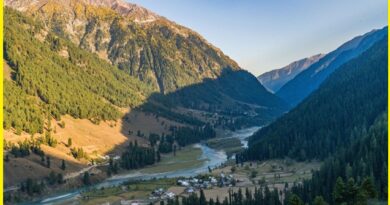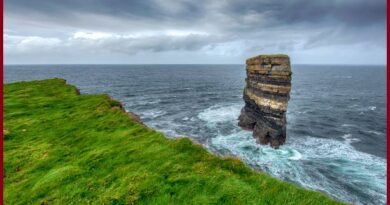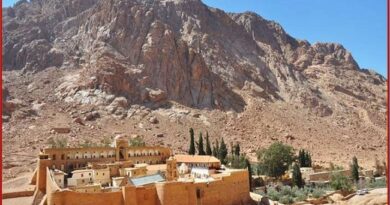Olympus Mons- A Super Volcano that can Swallow entire chain of Hawaiian Islands
Olympus Mons volcano
Olympus Mons is a shield volcano located on the planet Mars. It is the tallest mountain in the Solar System, with an elevation of about 22 kilometers above the Martian datum (the point from which Martian elevations are measured). Olympus Mons is located in the Tharsis volcanic plateau region of Mars, which is known for its extensive volcanic activity.
The volcanic activity on Olympus Mons is believed to have been active for millions of years, with the most recent eruptions occurring about 25 million years ago. The volcano’s shape is characteristic of shield volcanoes, with gentle slopes rising from a broad base to a flattened summit. The caldera at the summit of the volcano is about 80 kilometers wide, making it one of the largest calderas in the Solar System.
Olympus Mons is so large that it has an effect on the Martian atmosphere, causing changes in atmospheric pressure and wind patterns. The volcano’s size is believed to be due to the lack of plate tectonics on Mars, which allows magma to accumulate in one location over a long period of time. Despite its enormous size, Olympus Mons is not considered to be an active volcano, as there is no evidence of recent volcanic activity. However, scientists continue to study the volcano and its geological history to better understand the formation and evolution of Mars.
Why volcanoes on Mars are so massive
Olympus Mons is 624 km in diameter and is rimmed by a 6 km high scarp. A caldera 80 km wide is located at the summit of Olympus Mons. To compare, the largest volcano on Earth is Mauna Loa. Mauna Loa is a shield volcano 10 km high and 120 km across. The volume of Olympus is about 100 times larger than that of Mauna Loa. In fact, the entire chain of Hawaiian islands (from Kauai to Hawaii) would fit inside Olympus Mons.

The lava flows on the Martian surface are much longer, probably a result of higher eruption rates and lower surface gravity. Another reason why the volcanoes on Mars are so massive is because the crust on Mars doesn’t move the way it does on Earth. On Earth, the hot spots remain stationary but crustal plates are moving above them. The Hawaiian islands result from the northwesterly movement of the Pacific plate over a stationary hotspot producing lava. As the plate moves over the hotspot, new volcanoes are formed and the existing ones become extinct. This distributes the total volume of lava among many volcanoes rather than one large volcano. On Mars, the crust remains stationary and the lava piles up in one, very large volcano.
Also read- Did you know ‘Flared slope’ in Geology, if not Read About “Wave Rock”
What’s inside Olympus mons volcano
The interior of Olympus Mons is composed of multiple layers of solidified lava flows. The lava flows on the volcano are believed to be composed of basaltic rock, which is a common type of volcanic rock found on both Earth and Mars. The volcanic activity on Olympus Mons is thought to have been relatively calm and effusive, with lava flows slowly building up over time to create the massive shield volcano. The gentle slopes of the volcano are a result of this effusive volcanic activity, which produces thin, fluid lava flows that can travel long distances before solidifying.
The composition of the lava flows on Olympus Mons can provide valuable information about the geology and history of Mars. Scientists study the chemical composition of the volcanic rock to understand the planet’s mantle and crust, and to better understand the processes that shaped the planet’s surface over time.



